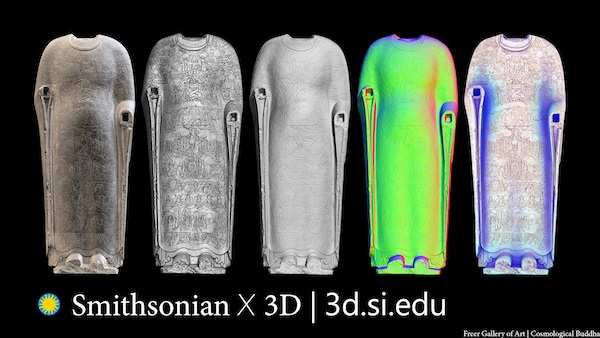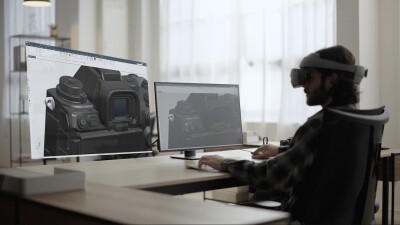Autodesk worked with Smithsonian to create web experience
The Smithsonian, the world’s largest network of museums, has unveiled Smithsonian X 3D, an online museum complete with a gallery, guided tours, research data, and a 3D object explorer with 3D models of 21 representative objects from its collection of over 137 million objects.
The Smithsonian X 3D Collection features objects from the Smithsonian that highlight different applications of 3D capture and printing, as well as digital delivery methods for 3D data in research, education and conservation. Among the objects in the collections are:
- The Wright Flyer (National Air and Space Museum): The 3-D scan of the Wright Flyer allows users to explore the fine details of the artifact, providing a window into the Wright’s inventive genius and understanding of the principles of flight.
- Cassiopeia A Supernova Remnant (Smithsonian Astrophysical Observatory): This multi-wavelength 3-D reconstruction of Cassiopeia A uses X-ray data from NASA’sChandra X-ray Observatory, infrared data from NASA’s Spitzer Space Telescope and optical data from NOAO’s 4-meter telescope at Kitt Peak and the Michigan-Dartmouth-MIT 2.4-meter telescope.
- Fossil Whale (National Museum of Natural History): Smithsonian paleontologists and 3-D staff conducted a time-sensitive documentation of the skeletons from the site (Chile) and captured essential data about the arrangement and condition of the skeletons before they were removed and the site was paved over.
- Cosmic Buddha (Freer and Sackler galleries): To study such low-relief compositions, scholars have traditionally made rubbings with black ink on white paper, which give stronger contrast to the outlines. 3-D scanning, used with a wide variety of imaging techniques, can give even more clarity to the designs.
To view these and other objects scanned using 3-D technology, the Smithsonian and San Rafael, Calif.-based Autodesk created the Smithsonian X 3D explorer. Users are able to rotate the objects, take accurate measurements between points and adjust color and lighting. The explorer also has a storytelling feature, which allows Smithsonian curators and educators to create guided tours of the models. The explorer is also embeddable on non-Smithsonian websites, blogs and social media.
“Capturing digital 3D models of our vast and complex collections of artifacts is a major priority,” said Gunter Waibel, head of the Smithsonian Digitization Program Office. “Working with Autodesk we can now share our collections with more people than we could ever reach before. It is our hope that the Smithsonian x3D Explorer will enhance education and research in ways we haven’t even imagined.”
The Smithsonian Digitization Program Office is chartered with digitizing as much of the Smithsonian’s collections as possible, and the scale of the collection presents a significant challenge. The office relied on Autodesk ReCap and Autodesk Maya software to easily and quickly capture artifacts with photos and turn them into detailed 3D models that can be viewed in “Hollywood style” quality with the x3D Explorer.
“We’re honored to have played a role in preserving such invaluable pieces of history and humanity,” said Amar Hanspal, senior vice president at Autodesk. “We hope that exploring these priceless artifacts, heirlooms, fossils and scientific specimens in 3D will generate more public interest and learning around science and technology – especially among students.”
The Smithsonian’s 3D Explorer’s 3D models of historic treasures and scientific specimens are available for anyone for free to view, study, interact, visually manipulate, and share. Many of the 3D models are available to download for personal and educational use, including the ability to produce physical objects using 3D printing. For example, classrooms around the globe can now work with educational replicas of these artifacts, and hopefully encourage further interest students to explore the vast collections of science, technology, engineering and anthropology that is captured at the Smithsonian.
Other sponsors of the Smithsonian’s digitization program include Direct Dimensions Inc., FARO Technologies Inc., 3D Systems Geomagic, API Services and Interactive Institute Swedish ICT.






